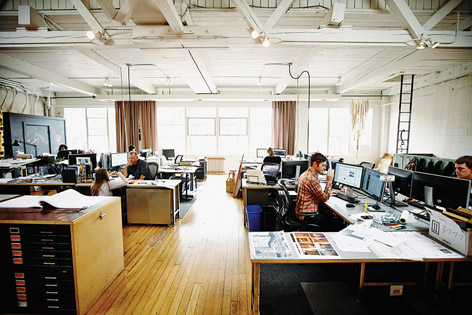1.6 Networks
A network is created when two or more digital devices are connected by a modem, network cable or wireless technology. Each point on the network that connects a device is called a node. A network within a small area such as a room for one person is a PAN (personal area network). A network within a building or buildings close together, such as a school or hospital, is called a LAN (local area network). A MAN (metropolitan area network) is a larger network over the size of a town or city. A network where devices are connected in different towns or countries is known as a WAN (wide area network).

Purpose of a network
Sharing resources
It is not uncommon for an office or home to have a number of computers before realising that a network would be useful. Without a network, each office computer would need a dedicated printer but because of the number required, they would be basic models to keep costs down. Alternatively, staff could share the printer by copying the document to be printed onto a flash drive and then loading it onto the computer connected to the printer. As well as being expensive, this is inefficient for both the person printing the document and the main user of the computer. If the computers are networked, only one printer is needed. This can reduce the time lost in printing and can also mean that a better printer can be purchased to improve the output of information. Other devices such as scanners and CD burners can also be shared.
Sharing programs
Purchasing software for each computer can become expensive. Many software vendors now provide a user licence that permits the program to be installed onto more than one computer. This type of licence may be expensive but it may be cheaper than purchasing an individual copy for each computer. Accounting software such as QuickBooks Pro and MYOB Premier provide multiuser licences that suit small businesses with small networks.
Sharing files
The ability to share files is very useful on a network. A user can access a file to be edited from anywhere on the network. This reduces duplication of work and use of computer memory. For example, a graphics program loaded on a single computer to work with digital images can share the resulting files with other computers on the network.
Communicating
Networks are very useful for communication within an organisation. For example, four computers on a network may be located on a different floor. The time taken for a staff member to print out a customer list, for example, or copy it onto a flash drive and then walk down to the next floor takes a lot longer than simply emailing via the company intranet.
Network computers
There are various types of network computers. These are two of the basic setups.
- File server networks: One computer is the main host that stores all programs and data files.
- Peer to peer networks: Computers are connected so they can share files and peripheral devices without the need of a central, host computer.

Backup equipment
It is important to have a backup system that will protect the network if it crashes because of power failure or damage. This is usually achieved by using a mirror image on the server or an additional, dedicated server that is a copy of the main server. This way, if something happens to the network, it can be restored quickly using the backup server.
Computer awareness exercise 7
Networks
- Find out what a thin client network is. List two benefits and two disadvantages in using this type of network.
- Find out what a client–server network is. List two benefits and two disadvantages in using this type of network.
- The network topology, or structure, refers to how the components of the network are connected. Search for information on the following network types. Explain how they are connected. List an advantage and disadvantage of each type. Draw a diagram of the topology:
- Point to point.
- Bus network.
- Star network.
- Ring network.
- Mesh network.